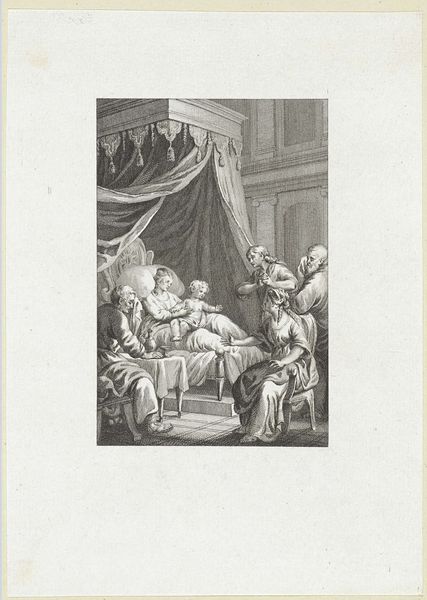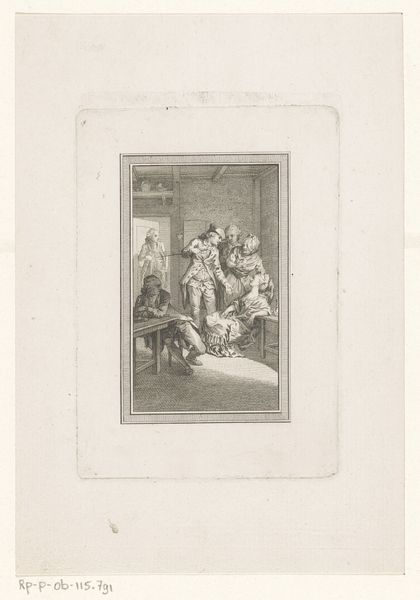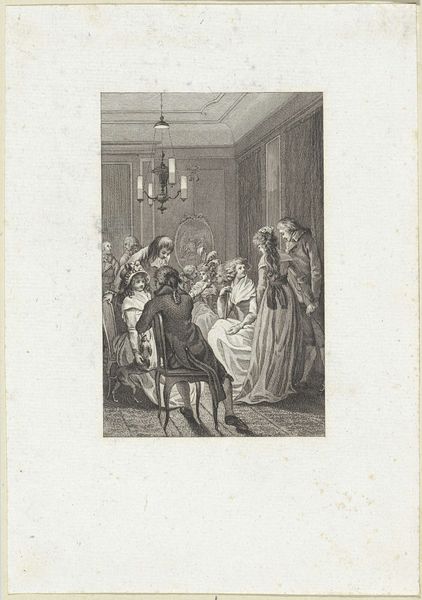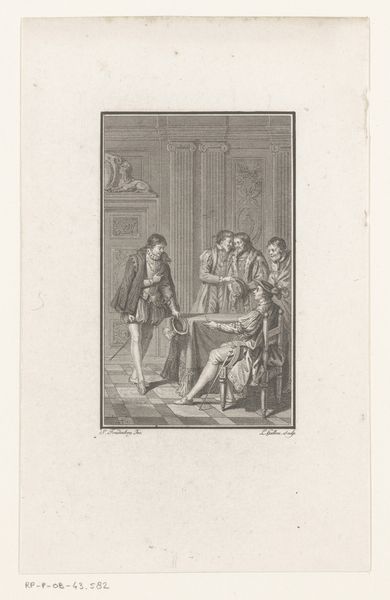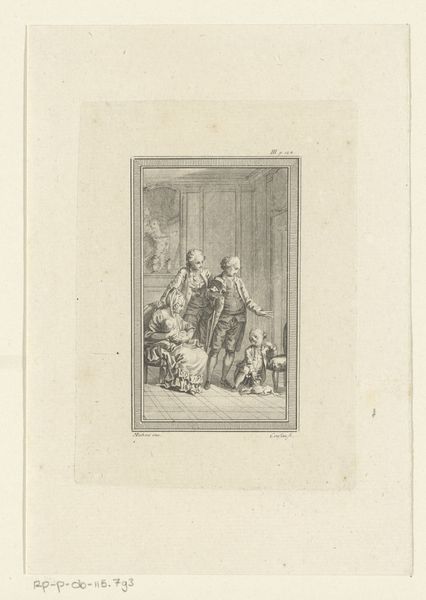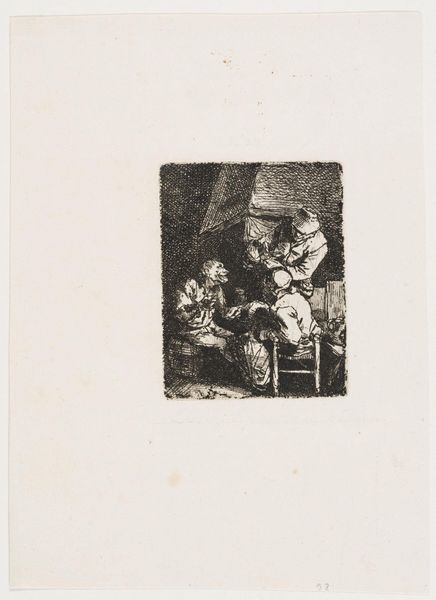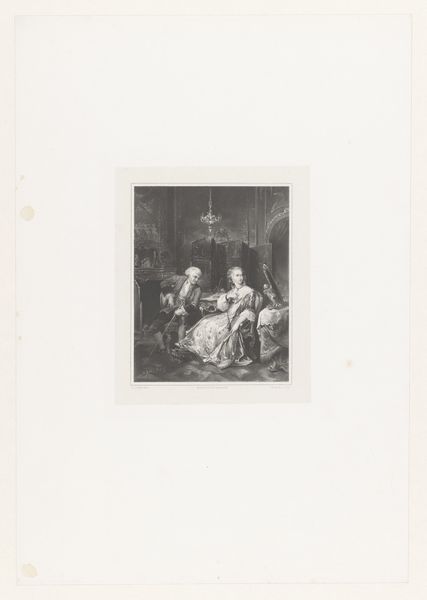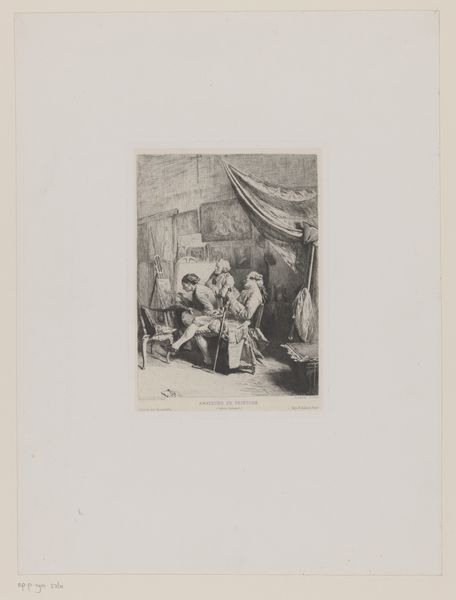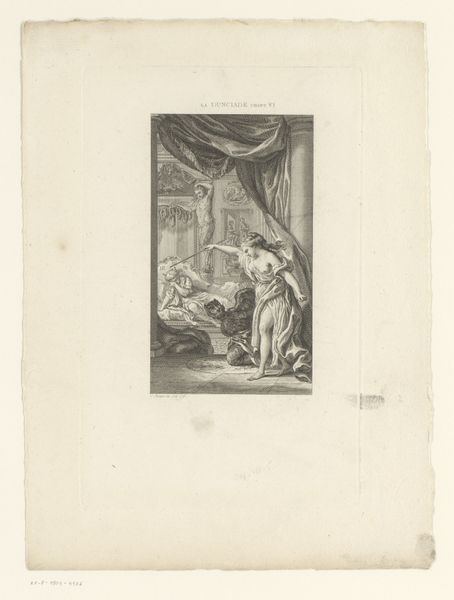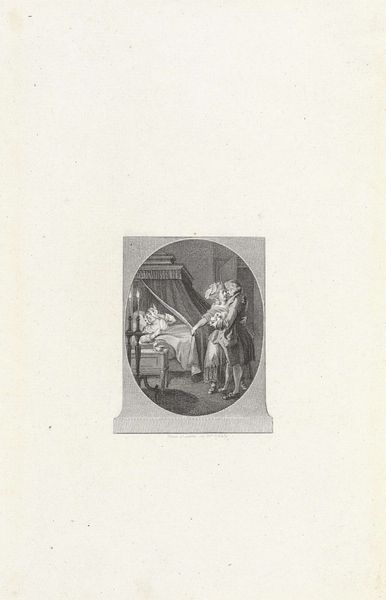
Zieke vrouw wordt geholpen door medicijnvrouw in tropen 1807 - 1855
0:00
0:00
print, engraving
#
pencil drawn
#
narrative-art
# print
#
pencil sketch
#
old engraving style
#
group-portraits
#
romanticism
#
genre-painting
#
engraving
Dimensions: height 227 mm, width 145 mm
Copyright: Rijks Museum: Open Domain
Curator: What strikes me immediately is the pallor of the central figure. It communicates illness in such a dramatic fashion. Editor: And that is visually amplified in this print entitled "Zieke vrouw wordt geholpen door medicijnvrouw in tropen", or "Sick Woman Assisted by Medicine Woman in the Tropics," attributed to Johannes Alexander Rudolf Best, sometime between 1807 and 1855. It's an engraving, and you can really see the line work creating the texture. Curator: Absolutely. The tropical setting and the medicine woman immediately establish a dichotomy—a visual representation of the perceived "civilized" and the "native" practices surrounding health. Look at the arrangement of figures—the medicine woman is placed centrally, almost revered, yet the clothing and context tell a very different story. Editor: Right. The sharp contrasts—both in the composition and in the supposed cures represented—underscore how social class dictated not only access to medical treatment, but also expectations around gendered and racial labor. Was this produced as a political print, a work of social commentary, or simply a record of colonial life? The quality of the paper and detail achieved through engraving speaks to a specific market and intent. Curator: Indeed. The symbolic elements further reinforce the themes: the ornate items on the bedside table contrasting with the woman's weak disposition implies excess and perhaps a cause of the ailment itself, the books at the table possibly hinting the colonial disease such as Yellow-fever or Malaria, quite common during that era. It reveals not just a moment of sickness but perhaps the ailments of colonialism itself. Editor: I'm curious about the materiality. An engraving of this size surely required considerable skill and time, yet would have allowed for relatively wide dissemination once completed. It really underlines the way that this technology shapes visual narratives and reinforces dominant social hierarchies. The labor of making informs its meanings. Curator: Precisely. It’s a visual archive, shaped by technique. And one that provides valuable insights into colonial history and the symbols deployed to rationalize it. Editor: The print provides insight not only to the materials available, but also speaks volumes about its circulation among distinct groups of people and the system of commerce that the printing demanded. Curator: Absolutely, a convergence of symbolic value, and materials. Editor: Thank you for illuminating all these layers within a single image!
Comments
No comments
Be the first to comment and join the conversation on the ultimate creative platform.
